Showing posts sorted by relevance for query The 5th Volt. Sort by date Show all posts
Showing posts sorted by relevance for query The 5th Volt. Sort by date Show all posts
Wednesday, May 29, 2024
Superbooth 2024 - Talking with the makers of AE Modular
video upload by The 5th Volt
"This is the last video from Superbooth 2024. We spent the last evening at the AirBnB chilling and talking about the amazing three days we had, what we learned, what went well and what we can improve next year. This is just a bunch of dude's spinning yarn, but you may find this interesting, especially if you're interested in building AE modules yourself and maybe join the cool little group of 3rd party makers."
Superbooth 2024 - Wonkystuff, Kyaa, BF Synth and Tobi
video upload by The 5th Volt
"This is the second video of 3 from this year's Superbooth. Here I'm talking with the amazing third party creators for the AE Modular synthesizer format: John aka Wonkystuff, Toms aka Kyaa, Gregory and Zeno from BF Synths and Tobi.
00:00 Introduction
00:32 Toms aka Kyaa
09:26 John aka Wonkystuff
32:03 Zeno and Gregory from BF Synths
43:35 Tobi and the Succubus"
Superbooth 2024 - Robert from tangible waves
video upload by The 5th Volt
"This is the first of 3 videos from Superbooth. Here Robert will show us all the new modules he has developed, especially the new and exciting IMDI modules which enable the communication between modules using the MIDI protocol.
00:00 Intro
02:24 Interview with Robert
16:30 Robert's performance"
Saturday, November 07, 2020
ÆTHER WAVES VOL. 2 - AE Modular Synthesizer Community Album for Charity!
THE TUESDAY NIGHT MACHINES
♥ SUPPORT: http://bit.ly/ttnm-support ♥
Just like last year, the AE Modular Synth community created an album together. 26 artists came together to create an exclusive track each, with 100% AE Modular sound, resulting in almost 2 hours of nicely listenable electronic synthesizer music.
All earnings go to the "Musicians without Borders" charity!
Listen to it here and let us spread the joy of making music:
https://aetherwaves.bandcamp.com/albu...
AE Modular Community Forum:
https://forum.aemodular.com/forum
"** Æther Waves Vol. 2 **
A celebration of the AE Modular Synthesizer made by tangible waves.
This is the second collaboration from artists from the AE Modular forum at forum.aemodular.com. You will hear a very broad spectrum of how people make music with the AE Modular and it shows how versatile this system is. But no matter how different the tracks are from one another, they are all 100% performed with the AE Modular system and showcase how versatile this instrument is.
Each artist has provided a description and a photo of their patch and you can see this information when you click on each individual track.
There is now a growing group of artists that call the AE Modular their main instrument and you can see a list of them here: wiki.aemodular.com/pmwiki.php/AeMusic/MeetTheArtists
If you would like to know more about tangible waves and the AE Modular system you can find this at: tangiblewaves.com
credits
released November 6, 2020
** All proceeds donated to Musicians Without Borders **
Again all proceeds from sales go directly as donations to a non-profit organisation. This year we will support Musician Without Borders who use the power of music to bridge divides, connect communities, and heal the wounds of war. Their vision is to inspire people worldwide to engage as peacemakers and use music to transform lives.
Please read more about the incredible work that Musicians Without Borders is doing world wide on their website: www.musicianswithoutborders.org
** Big thanks to **
BLAKMOTH, who has created this awesome album cover and the new banner! You can find his music and art here on Bandcamp at blakmoth.bandcamp.com
** Album Produced by **
Spacedog, who has taken all the raw tracks and applied the same sound mastering magic touch to each of them to make them sound outstanding. He is also a very productive musician with decades spent in the Berlin School and you can find links to his various projects at wiki.aemodular.com/pmwiki.php/AeMusic/TheSovietSpaceDogProject
The 5th Volt, who just had to send reminders every week or so to the forum to coax and convince people on the forum to come out and show their music to the world. He is incredibly humbled by the breadth and scope of skills shown by the artists that have participated in the making of this album. THANK YOU TO ALL!
You can find more info about The 5th Volt at wiki.aemodular.com/pmwiki.php/AeMusic/The5thVolt
** Special Thanks to **
Robert Langer from tangible waves, who had the creative spark and courage to put out a completely new and revolutionary modular synthesizer system into the world. His creation of the AE Modular system has and continues to inspire seasoned and beginning musicians all around the world. But he is not only an incredible electrical engineer, but also a gifted musician and you can hear him play his own synth in the very last track of this album.
tangiblewaves.com"
Friday, November 30, 2007
David Rogoff on VCOs
David Rogoff sent the following into the Yamaha CS80 list. I asked him if I could put it up and he gave me the OK.
"This touches on a big, somewhat technical, issue of what kind of VCOs the CS80 uses. The VCO III chip is a linear VCO, sometimes called Hz/Volt, as opposed to the more common exponential (Volts/Octave) VCOs (e.g. MiniMoog, Curtis & SSM chips in SCI and Oberheim polys).
Here's a pretty good explanation: link
Here's a (I hope) quick one:
The most basic VCO is a sawtooth one, which can be a capacitor charged by a current. For non-EE types, here's my modified toilet analog (and you though the Metasonix vacuum-tube VCO was weird) : The capacitor is like the water tank of a toilet. The water filling it up is the current. The height of the water is like the voltage across the capacitor. Now, modify the float valve so that when the tank is full it automatically flushes. Then the cycle starts again. If you double the water filling rate ( = double the current), you double the frequency of the flush cycles.
The is a basic, linear VCO (actually Water-CO). It shows a couple of things. First, it's not actually voltage controlled, but current controlled. Ignore that for now. Also, the filling time is adjustable, but the discharge/flushing time is fixed. This is an issue with all sawtooth VCOs and is why many (e.g. Moog) VCOs have a high-frequency-tracking adjustment, which helps cancel this out. Here's the CS80 VCO: link
Ok, so why don't all synths use linear VCOs? As the above link explains, human ears don't hear frequency linearly. A above middle C is 440Hz. An octave about is 880Hz, or double the frequency. The next octave would be 1760Hz: double that. If you graph this, it's an exponential curve. So, the space (in Hertz) between two notes keeps getting bigger as we get to high pitches. If you had a modular synth with linear VCOs (like that old Paia), the top key might output 5 volts. One octave down would be 2.5volts. The next 1.25volts, followed by 0.625v and 0.3125v. This is a pain to generate. Also, as you get to lower notes, smaller voltage inaccuracies start becoming bigger pitch errors to our ears.
To avoid all this, someone (anyone know who? Dr. Bob? Tom Oberheim? Don Buchla?) came up with exponential VCOs. Basically, they're just a linear VCO with a circuit in front of them called (big surprise) an exponential converter. This is just a circuit that takes a linear input (1volt/octave) and outputs the doubling voltage (actually current...) that the VCO wants. Now, everything is simple.
So, why did Yamaha go for the linear? Two reasons, I'd guess. First, adding the exponential converter to each VCO adds more cost to the chips, since there's more circuitry. A bigger issue is temperature stability. As we've been talking about lately, all circuits are affected (i.e. knocked out of tuning) by temperature changes. The exponential converter, for reasons I won't go into, is really sensitive to this. People have been complaining about the tuning stability of the CS80, but it's rock solid compared to any poly-synth with exponential VCOs (P5, OBX, A6, etc). They all need computer-controlled auto-tuning routines to have any chance of staying in tune.
So, what issues/problems/advantages does the CS80 having linear VCOs create?
Good things:
1) modulation - linear vibrato sounds a bit different than v/oct vibrato, probably closer to acoustic vibrato (e.g. violin). Also, as the modulation speed increases, you start getting into F.M. land, which requires linear modulation (you don't want to know the math!). This is why some modular VCOs have linear FM inputs in addition to the normal v/oct controls.
2) sweep to D.C. - my favorite. If you start a pitch bend at the right end of the ribbon and slide all the way to the left, the pitch of the VCOs all go down to 0Hz / D.C. / flat-line. This is because the input to the VCOs goes to 0 volts and the frequency equals the voltage times a constant. With a exponential VCO this is impossible. Going 1 volt less on the control input goes down one octave. Mathematically, you can't get to zero Hz. You'd need to input -infinity volts! Also, many other limitations in the circuit block the VCO from even getting close. Big win for linear VCOs!
Bad things:
1) Keyboard voltages - as I wrote above, the keyboard has to generate exponential voltages. This is a big pain. In a digitally-controlled analog (like the CS80, P5, etc), the keyboard voltage comes from a DAC (digital-analog-converter). 99.99% of DACs are linear. The CS50/60/80 (and others in the family) have bizarre, custom exponential DACs. This makes interfacing the CS80 to other synths and/or MIDI-CV converters a pain.
2) CV mixing. Finally, we get to the original question of adding a pitch-bend input to the CS80. In the volts/octave world, everything is easy: you just add voltages together. Adding voltages is simple to do - just an op-amp and a few resistors. Let's say you had the following voltages come out of a v/oct keyboard: 1v, 2v, 4v. This could represent a low C (c1), C one octave up (c2), and C two octave above that (c4). To make it simple, let's say we have a pitch wheel or pedal add 1 volt to this (2v, 3v, 5v). This would be c2, c3, c5, so we've just transposed the sequence up an octave.
Ok, what happens if we try this with a linear voltage. For the same c1, c2, c4 notes, we might have 1volt, 2volt, 8volt. Adding one volt gives 2volt, 3volt, 9volt. The first note is correctly up an octave, but the next is only up about a 5th and the third note is only transposed up about a semitone. This, obviously, doesn't work. What we need to do, instead, is multiply the voltages. To transpose up an octave, double the voltages. To transpose down an octave, halve them. This is easy for a fixed transpose, but if you want a variable, like a pitch-bend pedal input, you need to multiply voltages. Just like it's much, much easier for people to add and subtract than multiply and divide, so it is for analog (and digital) circuitry.
If you follow the schematics or block diagram of the CS80, you can see that the voltage to the VCOs comes through a long chain of multiplications. The ribbon is actually the initial voltage source for the whole instrument. If the ribbon isn't pressed it outputs some fixed voltage (not sure the actual value - call it 2 volts). If the ribbon is slid up, all the way, from the left to the right, it would output double this voltage, which corresponds to one octave up. If the ribbon is slid the other way, it outputs zero volts, as mentioned above. Next, the voltage is sent through the concentric pitch knobs. Any normal potentiometer is a voltage multiplier, which can multiply the input by anything from zero to one.
This voltage then becomes the reference input to the exponential DAC on the KAS board, which multiplies it by it's exponential resistor network to create the CVs for each of the either voices. These voltages go to the VCO chips on the M-Boards. Are we done - nope - one more CS80 weirdness. In a v/oct synth, the octave/foot switches would just generate a voltage that would be added to the keyboard CV (e.g. MiniMoog). The CS80 VCO, instead, has a special footage input that needs an exponential current for each feet setting. Because this is difficult to do accurately over a wide range, we end up with the wonderful VR4, VR5, and VR6 trimmers to get the feet switching calibrated separately for each of the 16 VCOs. Yuch!
Getting back to the original question (remember Alice? There's a song about Alice...), a pitch bend input would need to control a voltage multiplier. This could be an added circuit, after the ribbon circuit, or could probably be merged with the ribbon voltage. I haven't figured out the details, but it's not rocket science. However, it is a lot more work than it would be on something like a Prophet 5.
Ok, I guess that wasn't quick, but at least I didn't have an graphs or get into transistor curves or Bessell functions.
David"
"This touches on a big, somewhat technical, issue of what kind of VCOs the CS80 uses. The VCO III chip is a linear VCO, sometimes called Hz/Volt, as opposed to the more common exponential (Volts/Octave) VCOs (e.g. MiniMoog, Curtis & SSM chips in SCI and Oberheim polys).
Here's a pretty good explanation: link
Here's a (I hope) quick one:
The most basic VCO is a sawtooth one, which can be a capacitor charged by a current. For non-EE types, here's my modified toilet analog (and you though the Metasonix vacuum-tube VCO was weird) : The capacitor is like the water tank of a toilet. The water filling it up is the current. The height of the water is like the voltage across the capacitor. Now, modify the float valve so that when the tank is full it automatically flushes. Then the cycle starts again. If you double the water filling rate ( = double the current), you double the frequency of the flush cycles.
The is a basic, linear VCO (actually Water-CO). It shows a couple of things. First, it's not actually voltage controlled, but current controlled. Ignore that for now. Also, the filling time is adjustable, but the discharge/flushing time is fixed. This is an issue with all sawtooth VCOs and is why many (e.g. Moog) VCOs have a high-frequency-tracking adjustment, which helps cancel this out. Here's the CS80 VCO: link
Ok, so why don't all synths use linear VCOs? As the above link explains, human ears don't hear frequency linearly. A above middle C is 440Hz. An octave about is 880Hz, or double the frequency. The next octave would be 1760Hz: double that. If you graph this, it's an exponential curve. So, the space (in Hertz) between two notes keeps getting bigger as we get to high pitches. If you had a modular synth with linear VCOs (like that old Paia), the top key might output 5 volts. One octave down would be 2.5volts. The next 1.25volts, followed by 0.625v and 0.3125v. This is a pain to generate. Also, as you get to lower notes, smaller voltage inaccuracies start becoming bigger pitch errors to our ears.
To avoid all this, someone (anyone know who? Dr. Bob? Tom Oberheim? Don Buchla?) came up with exponential VCOs. Basically, they're just a linear VCO with a circuit in front of them called (big surprise) an exponential converter. This is just a circuit that takes a linear input (1volt/octave) and outputs the doubling voltage (actually current...) that the VCO wants. Now, everything is simple.
So, why did Yamaha go for the linear? Two reasons, I'd guess. First, adding the exponential converter to each VCO adds more cost to the chips, since there's more circuitry. A bigger issue is temperature stability. As we've been talking about lately, all circuits are affected (i.e. knocked out of tuning) by temperature changes. The exponential converter, for reasons I won't go into, is really sensitive to this. People have been complaining about the tuning stability of the CS80, but it's rock solid compared to any poly-synth with exponential VCOs (P5, OBX, A6, etc). They all need computer-controlled auto-tuning routines to have any chance of staying in tune.
So, what issues/problems/advantages does the CS80 having linear VCOs create?
Good things:
1) modulation - linear vibrato sounds a bit different than v/oct vibrato, probably closer to acoustic vibrato (e.g. violin). Also, as the modulation speed increases, you start getting into F.M. land, which requires linear modulation (you don't want to know the math!). This is why some modular VCOs have linear FM inputs in addition to the normal v/oct controls.
2) sweep to D.C. - my favorite. If you start a pitch bend at the right end of the ribbon and slide all the way to the left, the pitch of the VCOs all go down to 0Hz / D.C. / flat-line. This is because the input to the VCOs goes to 0 volts and the frequency equals the voltage times a constant. With a exponential VCO this is impossible. Going 1 volt less on the control input goes down one octave. Mathematically, you can't get to zero Hz. You'd need to input -infinity volts! Also, many other limitations in the circuit block the VCO from even getting close. Big win for linear VCOs!
Bad things:
1) Keyboard voltages - as I wrote above, the keyboard has to generate exponential voltages. This is a big pain. In a digitally-controlled analog (like the CS80, P5, etc), the keyboard voltage comes from a DAC (digital-analog-converter). 99.99% of DACs are linear. The CS50/60/80 (and others in the family) have bizarre, custom exponential DACs. This makes interfacing the CS80 to other synths and/or MIDI-CV converters a pain.
2) CV mixing. Finally, we get to the original question of adding a pitch-bend input to the CS80. In the volts/octave world, everything is easy: you just add voltages together. Adding voltages is simple to do - just an op-amp and a few resistors. Let's say you had the following voltages come out of a v/oct keyboard: 1v, 2v, 4v. This could represent a low C (c1), C one octave up (c2), and C two octave above that (c4). To make it simple, let's say we have a pitch wheel or pedal add 1 volt to this (2v, 3v, 5v). This would be c2, c3, c5, so we've just transposed the sequence up an octave.
Ok, what happens if we try this with a linear voltage. For the same c1, c2, c4 notes, we might have 1volt, 2volt, 8volt. Adding one volt gives 2volt, 3volt, 9volt. The first note is correctly up an octave, but the next is only up about a 5th and the third note is only transposed up about a semitone. This, obviously, doesn't work. What we need to do, instead, is multiply the voltages. To transpose up an octave, double the voltages. To transpose down an octave, halve them. This is easy for a fixed transpose, but if you want a variable, like a pitch-bend pedal input, you need to multiply voltages. Just like it's much, much easier for people to add and subtract than multiply and divide, so it is for analog (and digital) circuitry.
If you follow the schematics or block diagram of the CS80, you can see that the voltage to the VCOs comes through a long chain of multiplications. The ribbon is actually the initial voltage source for the whole instrument. If the ribbon isn't pressed it outputs some fixed voltage (not sure the actual value - call it 2 volts). If the ribbon is slid up, all the way, from the left to the right, it would output double this voltage, which corresponds to one octave up. If the ribbon is slid the other way, it outputs zero volts, as mentioned above. Next, the voltage is sent through the concentric pitch knobs. Any normal potentiometer is a voltage multiplier, which can multiply the input by anything from zero to one.
This voltage then becomes the reference input to the exponential DAC on the KAS board, which multiplies it by it's exponential resistor network to create the CVs for each of the either voices. These voltages go to the VCO chips on the M-Boards. Are we done - nope - one more CS80 weirdness. In a v/oct synth, the octave/foot switches would just generate a voltage that would be added to the keyboard CV (e.g. MiniMoog). The CS80 VCO, instead, has a special footage input that needs an exponential current for each feet setting. Because this is difficult to do accurately over a wide range, we end up with the wonderful VR4, VR5, and VR6 trimmers to get the feet switching calibrated separately for each of the 16 VCOs. Yuch!
Getting back to the original question (remember Alice? There's a song about Alice...), a pitch bend input would need to control a voltage multiplier. This could be an added circuit, after the ribbon circuit, or could probably be merged with the ribbon voltage. I haven't figured out the details, but it's not rocket science. However, it is a lot more work than it would be on something like a Prophet 5.
Ok, I guess that wasn't quick, but at least I didn't have an graphs or get into transistor curves or Bessell functions.
David"
Monday, December 22, 2014
First patch with the Mutable Instruments, Clouds, Elements, Streams and Shelves modules
First patch with the Mutable Instruments, Clouds, Elements, Streams and Shelves modules from Richard Devine on Vimeo.
Sequence starts with a cable connection to the clock output from the Steady State Fate Ultra Random module. This clock output was sent to a intellijel hub mult. From here the clock was sent to first to a 4ms RCD/QCD, Delptronics Trigger Man, and to the MakeNoise Rene. First output gates from 4ms RCD 4 divide output to the trigger input on the Braids module top row, running in "WLM" mode. Second multi output was sent to a 4ms QCD output green channel 4, set at division trigger time of 16. This would trigger single notes on the "Elements" module, that begin at 1:42. The playback mode is running in "Secret Easter Egg Mode" :-) The selected note sequence from the QCV output from Rene. Final output from Elements was sent to the Eventide "Pitch" pedal using the "Crystalizer" algorithm.
Clouds - was processing recorded chunks from the drum percussion, kick used from the top row "Peaks" 808 kick drum synthesis model. Then a snare created from the "grey" noise output from the SSF Quantum rainbow running through right side of Streams to make a snare drum, which was running in envelope mode with shape position to the left, short decay. Then a third voice using the blue noise output from the SSF quantum rainbow for hi-hats. Amplitude triggered/controlled by a HexVCA. The drum sequence was programmed from the Delptronics Triggerman, using all 8 patterns stringed together running in pattern play mode but being CV controlled by the S&H # 1 output from the SSF Ultra Random. Output for all voices was grouped and multiplied into two separate mixers. First three channels of the Intellijel Mutamix, which was then sent to output channel B. From there the summed mix was sent into the "left" side input of Clouds. Then triggered in time with the sequence by a 8th division trigger from the 4ms RCD. The freeze input in Clouds was triggered in time 7th divisions from the 4ms RCD, so that the chunks would process and record then play back in spurts of timed randomness. The mode was set in the pitchshifter/timestretcher configuration, where the grains where spliced so that created interesting granular pitching repeats and percussive glitch effects, as the rhythmic beats played through. Focused ranges where selected for the "Density/Pitchshifter" and "Timestetcher/Texture" controls. These where being controlled by the S&H #2 output from the SSF Ultra Random. The 1/volt pitch input was controlled by the toggle A/B output from the SSF ultra random. The clean drum outputs also sent to the channels 5, 6, and 7 on the Blue Lantern "Mix 'Em Up" module.
Streams left side processing from the MakeNoise Mysteron output, which was being triggered by the 5th division output, for the metallic ripple delay like sounds, with the mutation knob set to counter clockwise, low bit mode.
The "Shelves" module was processing the acid like filter parts that get un-muted at 12 seconds. The sound source running into "Shelves" was the "Braids" module bottom row, running in "CSAW" mode. CV controlled by the CV output from the MakeNoise Rene sent to another intellijel hub mult. From here each CV output was sent to the "Frequency" inputs pink, green and white jacks on "Shelves". The "Tides" high tide output modulation the CV controlling the top frequency input on "Shelves" Each filter knob was set so the incoming "CSAW" input was being processed like a formant filter effect.
Smooth Sub OSC bassline coming from the MakeNoise STO. This was being CV controlled by a intellijel µScale (B) output. Playing back 8 notes while being triggered from the 2nd division trigger on the 4ms RCD. Triangle wave output from a Intellijel Dixie (syncd) to the sequence controlling the input (1V/Oct). Second STO at 55 seconds, alternating high note triggers from the 1 channel output from the 4ms QCD 6th division output. The second STO output sent to a MakeNoise Optomix for short quick plucks.
The light reverb soft lead at 1:15 from sine wave output from another intellijel Dixie, being CV played from the 1V/Oct input from MakeNoise PressurePoints. The output was then ran into a Strymon "BigSky" pedal running the "nonLinear" reverb algorithm. The Chords coming in at 1:35 played by a Qu-Bit Nebulae module. The 4 chord sequence was hand played and recorded from a Roland Jupiter-6,. The sample was then cut into a 32 bar loop and then was restarted/played from a the 3rd output trigger on the 4ms QCD. This output was manually volume controlled by a Intellijel µAttQuad log/lin attenuator. Grids was being clocked from multi output from the SSF Ultra Random, from here the first output trigger channel was sent into a Addac 101 .WAV Player. Notes sequenced and recorded from the Mutable Instruments "Elements" Module. 4 notes in a specific order was played 4 times 32 bars/samples. This was triggered by the gate input triggered by the Gate Y output on Rene. Trill high notes from Microbe Modular Equation Composer running in Synth3Osc is a 3 osc synth mode.
Tuesday, June 08, 2021
Studio Electronics Eurorack Modules
Note: Auction links are affiliate links for which the site may be compensated.
via NOISEBUG Reverb
Note auction links are affiliate links. See the site's privacy policy for more info.
"What's nice about our OSCILLATION stunner (according to Tim) "is that the waveforms are DC-coupled [components connected directly together without any coupling capacitors], so they keep their shape even at sub-Hz speeds. The outputs are also buffered, so the amplitude is independent of the load they are driving. The waveform levels on some modern eurorack OSCs are often all different, and they vary depending if they go into the mixer or directly to the filter!" Coupling the circuitry without capacitors in-line gives the go-ahead for the full spectrum of frequencies to do their thing, and ensures near identical response over the years—audiophile, transistor-protecting signal path stuff here. You should see these beauts on the scope: a Class-A ballet of balance and proportion, only drawing modest current, rather evenly from plus and minus."
via NOISEBUG Reverb
Note auction links are affiliate links. See the site's privacy policy for more info.
"What's nice about our OSCILLATION stunner (according to Tim) "is that the waveforms are DC-coupled [components connected directly together without any coupling capacitors], so they keep their shape even at sub-Hz speeds. The outputs are also buffered, so the amplitude is independent of the load they are driving. The waveform levels on some modern eurorack OSCs are often all different, and they vary depending if they go into the mixer or directly to the filter!" Coupling the circuitry without capacitors in-line gives the go-ahead for the full spectrum of frequencies to do their thing, and ensures near identical response over the years—audiophile, transistor-protecting signal path stuff here. You should see these beauts on the scope: a Class-A ballet of balance and proportion, only drawing modest current, rather evenly from plus and minus."
Wednesday, April 02, 2025
The Generator - A Modular Live Performance
video upload by The 5th Volt
"I had prepared and practiced this performance to play live at a music festival nearby. Unfortunately the gig got cancelled due to bad weather, so I decided to perform it in my home office instead so that at least I would get a video out of it. I hope you like it."
"All sounds from the AE Modular from tangible waves and Synthstrom Deluge recorded using the Zoom H6 recorder and processed in Davinci Resolve."
"If you're interested how this all works, then watch my other video where I'm explaining everything about this setup:"
Modular Synth Live Performance - The Setup
video upload by The 5th Volt
"Here I'm explaining the complete setup which I prepared for a live performance which unfortunately got cancelled at the last minute. It was still a lot of fun to rise to the challenge of preparing a 40 minute live set, which I have never done before."
Wednesday, January 28, 2009
Jayemsonic Filtonium
 From the maker of the Resonator Neuronium, Jürgen Michaelis.
From the maker of the Resonator Neuronium, Jürgen Michaelis."The Filtonium came up by the idea to make again a "real" musical instrument without Midi and without keys or buttons. The soundproduction actually consists from a filter (which gave it the name), which can be excited by various kinds and thus serves as an oscillator, filter and VCA in one thing.
Three of these filters make the Filtonium a trichord, each of which can be played in tonal with the fingers on those metal sticks (sliders) similar to a string of a violin. There is no frets or quantisation! It's up to be played...
The excitation can be played by pressure and velocity sensitive pads on the corpus with three fingers of the right hand.
You can also use the bow function with the middle short slider to bow the filters like a violin string. Herewith, innumerable many shades of musical attacks are possible.
The three knobs adjust the resonance begin, the cross modulation of all three filters and the main volume. Because they don't have to be tweaked that much, they are placed at a less prominent location on the corpus.
The three "string" slider can be tuned individually by the fine trimmers at the end of the neck. Thus, open tunings, unisono, but also classic guitar(4th) or violin (5th) tunings ar possible.
Each slider has an interval of an octave.
The tonal scaling across the way of the slider is "linear" or hyperbolic (1/x) as for a real string instrument, because it is determined by quotients. The whole way is an octave, two thirds a 5th, a quart is a 4th, one third a -3rd etc.
So, to get tonal intervals, one has to play "logarithmic" scales like on the fret grid of a guitar (always the shorter to the corpus). All musicians playing string instruments are very familiar to playing like this, and an intervalwise linear grid (piano) would cause more difficulties and confusion.
With this, the typical exponentializing of the control voltage (like Volt/Octave) is not neccessary and would not cause further inaccuracys and temperature drifts like with normal synth VCOs.
The idea came in 1997, during talks with industrial designer Frank Dellen about the finish designs of AirBase99 and SunSyn. He took my conception and made a design and ergonomic study at the university GH Essen during his his study.
Now he gave me the model with his kind permission, to let this nice concept just be published and not forgotten in our minds."
via the bigcitymusic blog.
Friday, September 20, 2019
VELOCITY SYNTH MEET Coming to Seattle October 5th
Details here: https://www.velocityseattle.com
Exhibitors
4ms 4mscompany.com
4ms Company offers alternatives to traditional instruments with our poly-rhythmic clock modules that create evolving complex mathematical beat patterns, a resonator that can cast pop music into micro-tonal keys, a multi-channel wavetable oscillator, a routing matrix that's played like an instrument, and many more innovative devices. Rather than replicate concepts from the past, we strive to turn unique ideas into playable musical tools that expand the possibilities of music. We also offer Do-It-Yourself kits, and many of our designs are open-source.
Acid Rain Technology acidraintechnology.com
Acid Rain Technology is a manufacturer of music hardware out of Seattle, WA. We believe hardware instruments enable a unique connection between human and machine, and seek to improve this interaction through interface design for maximum playability.
After Later Audio afterlateraudio.com
After Later Audio is a boutique audio company located in Seattle, Washington. We make high quality Eurorack modules at accessible prices and we pride ourselves on responsive customer service. You can find our products for sale on our website, at various synth shops (Patchwerks, London Modular, Chuck Levin’s, and Modular 8), and on all of the major ecommerce sites.
Friday, April 05, 2024
AE Modular: Making a Berlin School Track
video upload by The 5th Volt
"In this video I give a step by step tutorial on how to make a very simple track in the Berlin School style of electronic music. I'm using the Synthexplorer from tangible waves with only a few basic modules, so you should be able to follow along with pretty much any system (even Eurorack!)
00:05 Intro Track
01:08 Introduction
02:52 The Tutorial
22:42 Bonus: The whole track
All sounds from the AE Modular from tangible waves recorded using the Zoom H6 recorder and processed in Da Vinci Resolve."
Monday, May 24, 2021
Presenting the Synth Explorer - Modular Synthesizer For Kids
video by tangible waves
"This is the first public presentation of the new educational system from tangible waves. The Synth Explorer is a small and affordable system with a careful selection of modules that enable a very large variety of experiments to make music, science and maths fun for kids while they are engaged with all their senses.
Carsten Eckelmann, aka The 5th Volt (https://the5thvolt.com), has presented this system at a synth meetup at Elk Elektronik in Wollong, Australia on the 22nd of May 2021.
To learn more about Synth Explorer or the AE Modular system please visit our website at https://tangiblewaves.com.
We also have a fantastic community of artists, beginners and wizards which you can find at https://forum.aemodular.com.
Also a big thank you to Ed from Elk Elektronik who organised this synthmeetup in his shop. You can find his website here: https://www.elkelektronik.com.au/"
Sunday, March 14, 2021
67 Modules in 14 Minutes! // AE Modular Synth Podcast #01
video by THE TUESDAY NIGHT MACHINES
"Timecodes:
0:00 Introduction
5:40 67 Modules in 14 Minutes!
23:14 The 5th Volt's AE Modular Synth Jam
27:37 Patch Breakdown
Welcome to the very first episode (and trial run) of the AE Modular Synth Podcast, in which Carsten and I play a fun game, taking turns explaining each currently available AE Modular synth module in only 10 seconds. Carsten then demonstrates his latest patch and gives a breakdown of what's happening behind the spaghetti.
Discuss this episode with us here:
https://forum.aemodular.com/thread/13..."
THE TUESDAY NIGHT MACHINES:
➤ Bandcamp: http://bit.ly/ttnm-bandcamp
➤ Instagram: http://bit.ly/ttnm-instagram
➤ Twitter: http://bit.ly/ttnm-twitter
Saturday, December 14, 2019
Modular as a Keytar?
Rodney B - Prosound Audio Wollongong Published on Dec 14, 2019 Jon Dent
Tangible Wave AE Modular with guitar strap.
A few more from this event:
The 5th volt - Wollongong Synths
post global disorder - Wollongong - Pro sound
Vitals - Prosound Audio Wollongong
Adam 2 - Prosound Wollongong
HOME
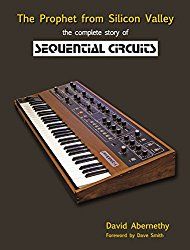
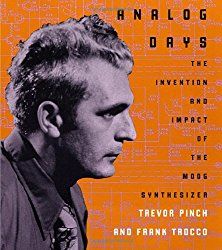
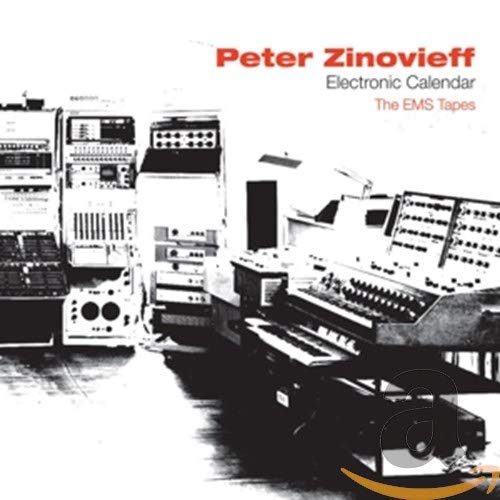
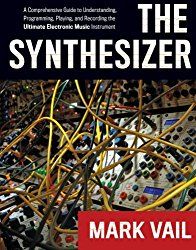
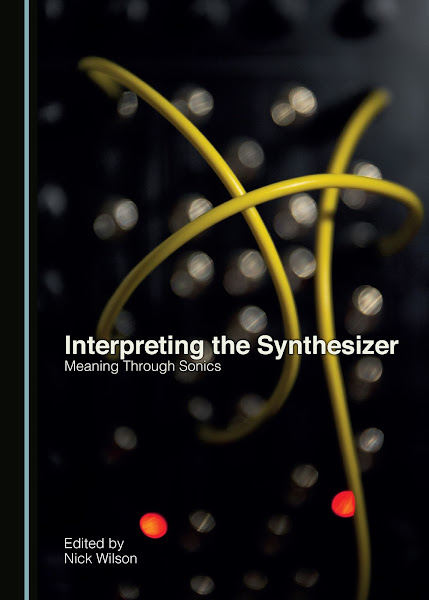
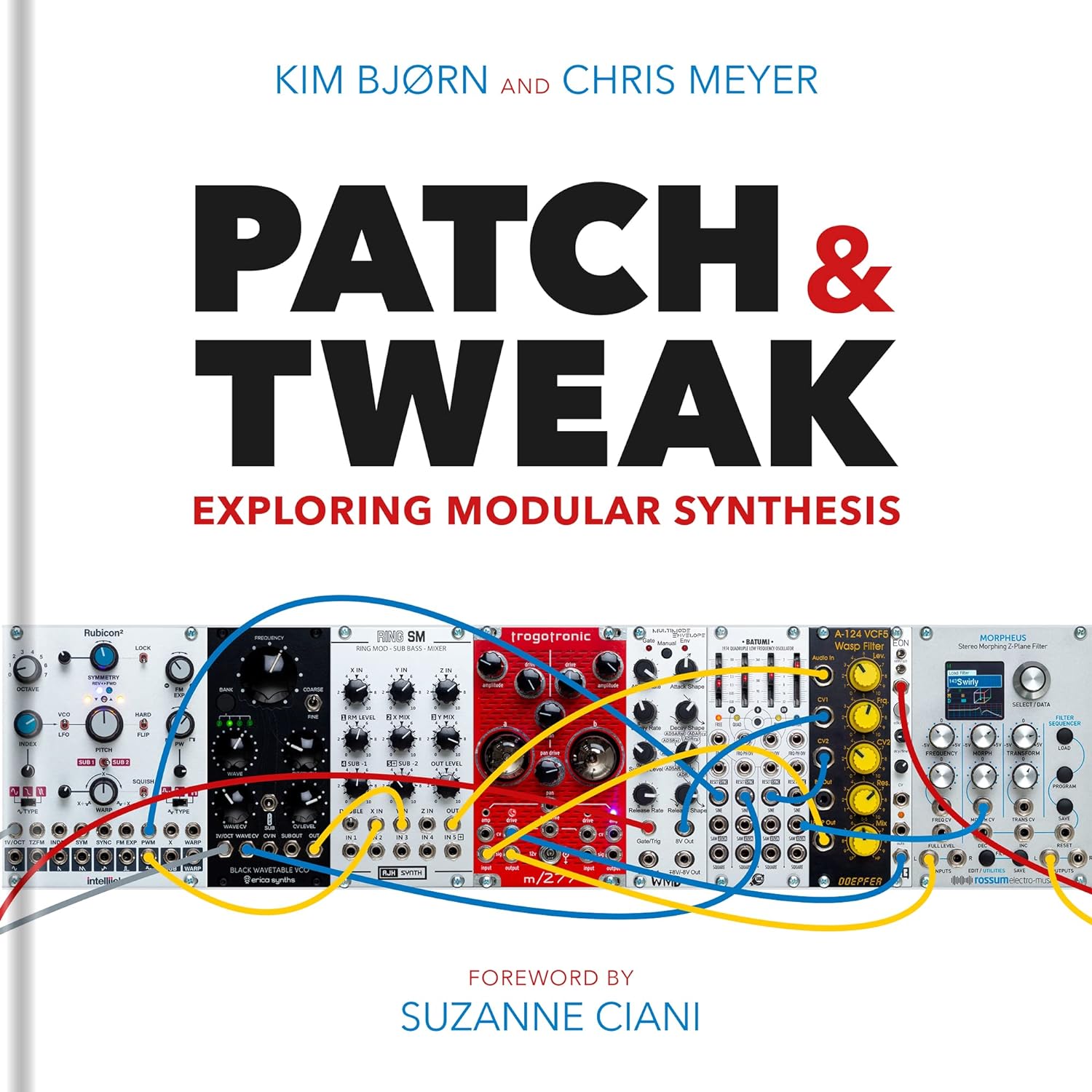

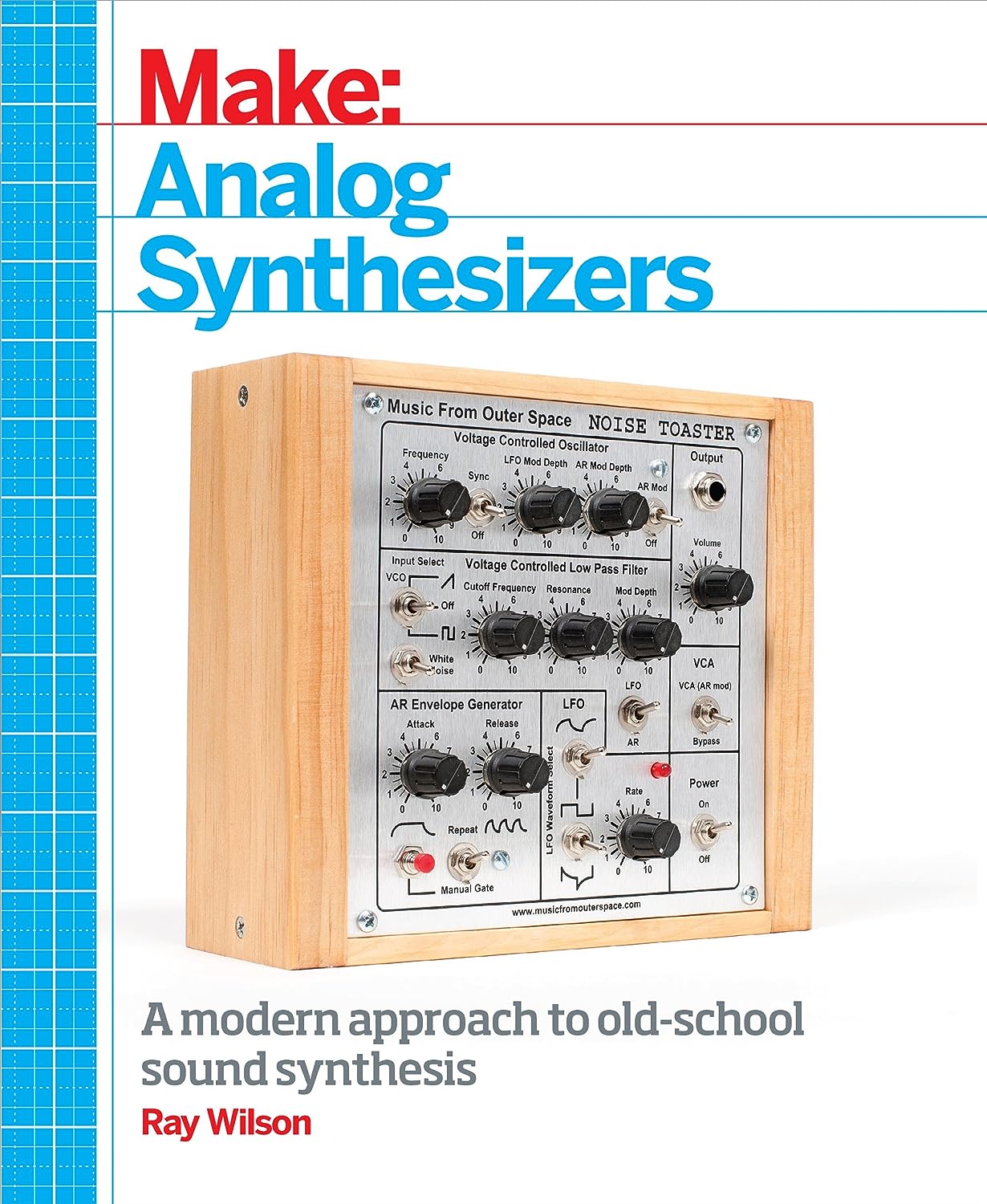
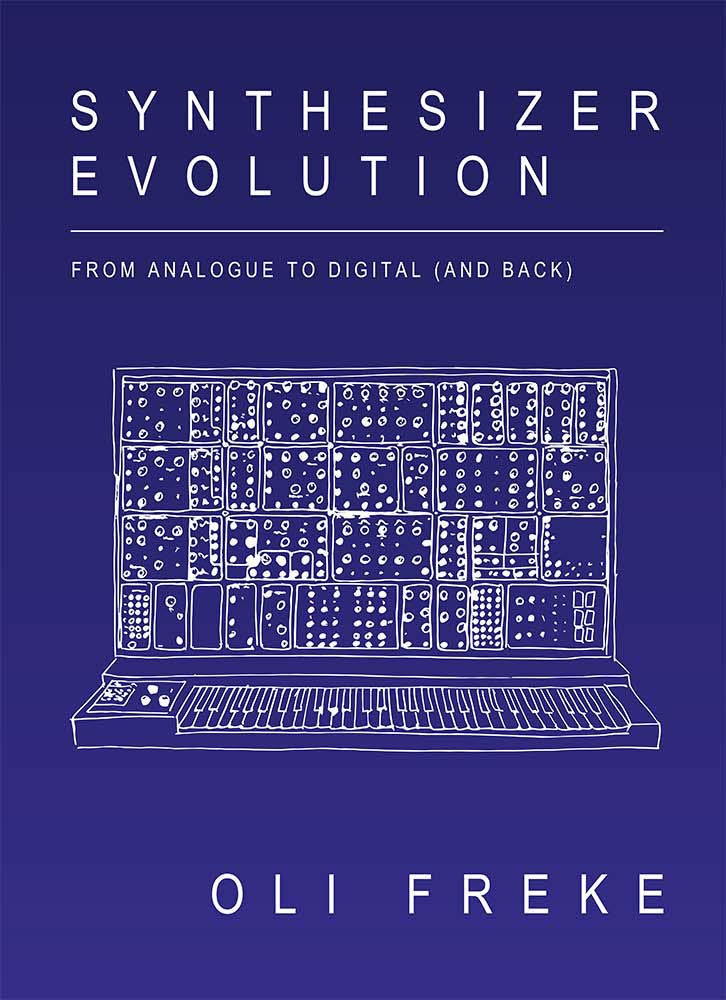
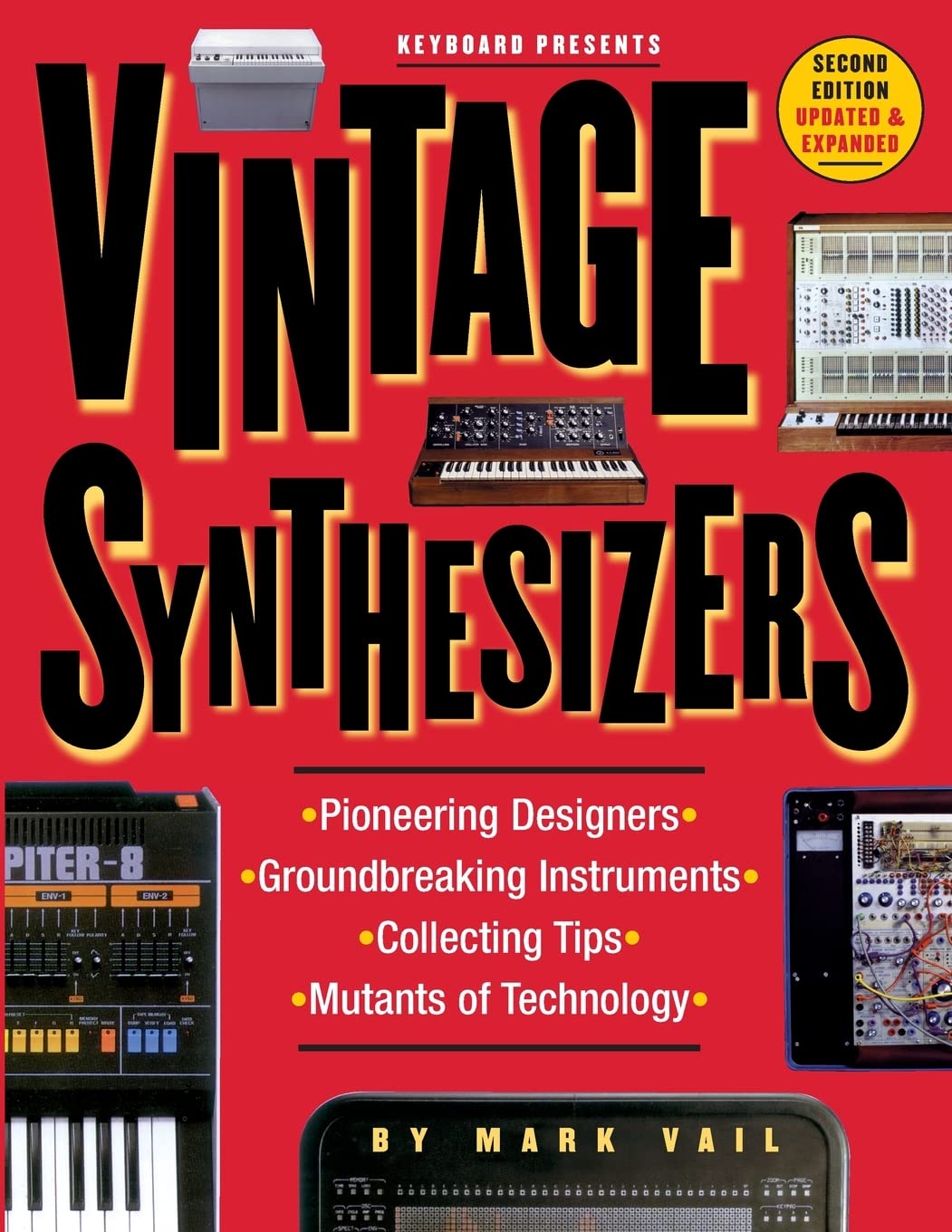
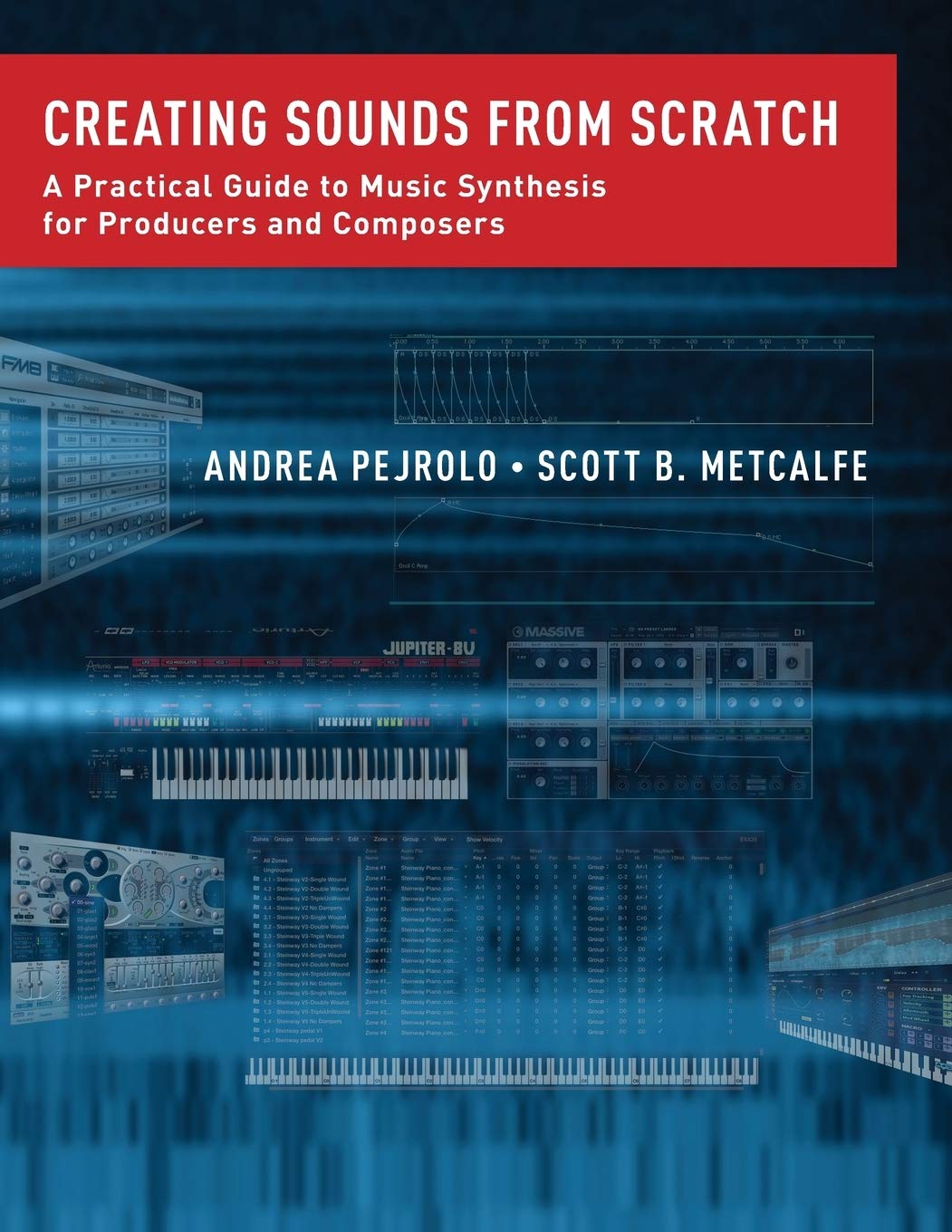
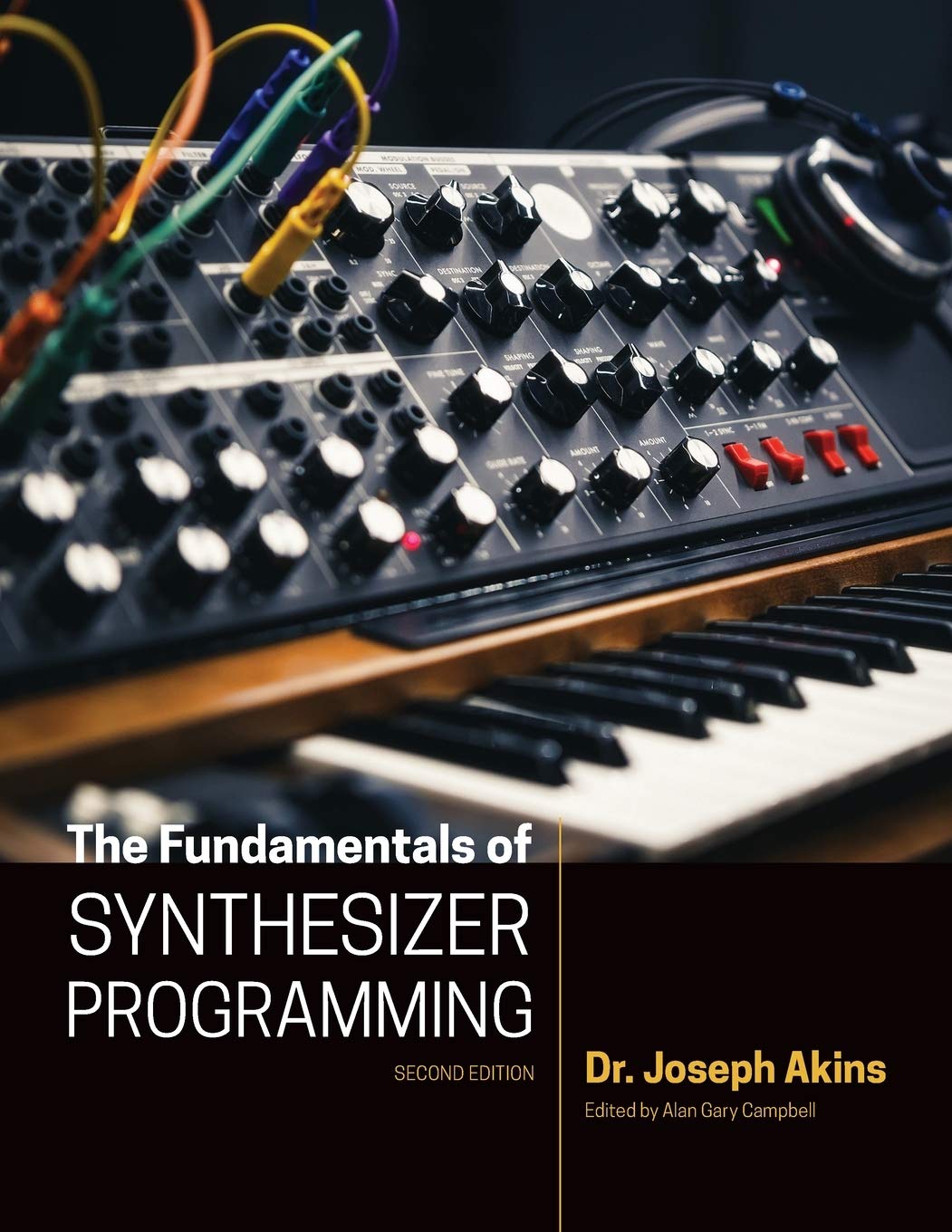

© Matrixsynth - All posts are presented here for informative, historical and educative purposes as applicable within fair use.
MATRIXSYNTH is supported by affiliate links that use cookies to track clickthroughs and sales. See the privacy policy for details.
MATRIXSYNTH - EVERYTHING SYNTH













© Matrixsynth - All posts are presented here for informative, historical and educative purposes as applicable within fair use.
MATRIXSYNTH is supported by affiliate links that use cookies to track clickthroughs and sales. See the privacy policy for details.
MATRIXSYNTH - EVERYTHING SYNTH


























